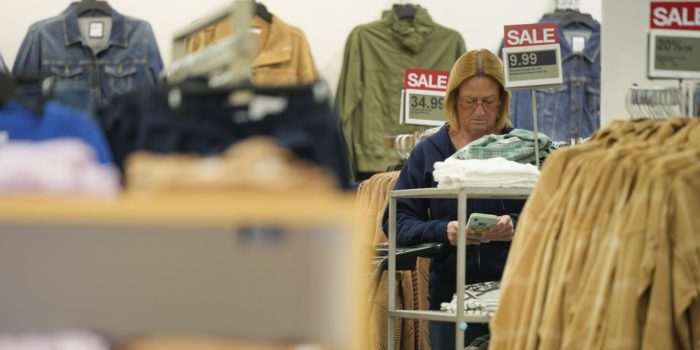(Headline USA) An inflation gauge favored by the Federal Reserve increased in January—the latest sign that consumer price increases have yet to get the memo from the Biden administration and its media allies that the U.S. economy is healthy and flourishing despite three years of post-pandemic mismanagement.
The government reported Thursday that prices rose 0.3% from December to January, up from 0.1% in the previous month.
Prices were up 2.4% from a year earlier, down from a 2.6% annual pace in December and the smallest such increase in nearly three years.
Still, inflation remains above the central bank’s 2% annual target. The rate when President Joe Biden took office in January 2021 was 1.4%, according to the Bureau of Labor Statistics.
Some Fed officials said they were optimistic that inflation will continue to fall back toward the Fed’s target level, with some downplaying the recent pickup in prices as a one-time jump.
“The path will continue to be bumpy, and we should not overreact to individual data readings,” Susan Collins, president of the Federal Reserve Bank of Boston, said Wednesday. “I remain what I call a ‘realistic optimist’ in thinking that the economy is on a path to 2% inflation on a sustained basis while maintaining a healthy labor market.”
Other officials sounded less certain. Jeffrey Schmid, the new president of the Federal Reserve Bank of Kansas City, said this week that “when it comes to too-high inflation, I believe we are not out of the woods yet.”
The year-over-year cooldown in inflation is sure to be spun as a positive indicator by the White House as Biden seeks re-election, but consumers have grown increasingly skeptical about the administration’s gaslighting on the economy and other issues in which the official narrative appears misaligned with the empirical reality.
Many Americans remain frustrated that overall prices are still well above where they were before inflation erupted three years ago, not long after he took office.
Inflation, as measured by the Fed’s preferred gauge, fell steadily last year after having peaked at 7.1% in the summer of 2022, with other measures putting it at closer to 9% or even into the double-digits.
Consumer prices on many items have risen well beyond the rate of increase, often costing at least 25% more than what they did under the administration of former President Donald Trump.
Supply chain snarls have eased, reducing costs of parts and raw materials, and a steady flow of job seekers has made it easier for employers to limit wage increases, one of the drivers of inflation.
Excluding volatile food and energy costs, prices rose 0.4% from December to January, up from 0.1% in the previous month. And compared with a year earlier, such so-called “core” prices rose 2.8%, down from 2.9% in December. Economists consider core prices a better gauge of the likely path of future inflation.
The costs of hospital and doctors’ services are also rising to offset the sizable pay raises commanded by nurses and other in-demand health care workers. That trend could help keep inflation elevated in the coming months.
Yet, some are hopeful that retail chains and other major companies will align, as they did in 2020, to artificially lower their costs and create a false sense of economic health in order to drag Biden across the finish line in the November election.
January’s uptick in inflation helps explain the concern expressed by many Fed officials, including Chair Jerome Powell, about potentially cutting interest rates too soon this year.
One influential official, Christopher Waller of the Fed’s Board of Governors, said this month that he would want to see two more months of inflation data after January’s to determine whether prices were cooling sustainably toward the Fed’s target level.
Beginning in March 2022, the Fed raised its benchmark rate 11 times to attack the worst bout of inflation in 40 years. Those rate hikes have helped cool inflation drastically. But they have also made borrowing much more expensive for consumers and businesses.
In particular, high loan rates have throttled sales in the economy’s crucial homebuying sector—an area that already was suffering from overvaluation due to the recent trend of investors snatching up real estate and pricing out potential homebuyers.
Thursday’s inflation data mirrored figures released earlier this month that showed that the government’s more widely followed consumer price index also rose faster in January than it had in previous months.
The Fed prefers the measure reported Thursday, in part because it accounts for changes in how people shop when inflation jumps—when, for example, consumers shift away from pricey national brands in favor of cheaper store brands.
Outside the Fed, most economists envision a steady, if fitful, slowdown of inflation in the coming months. Economists at Goldman Sachs project that core inflation, as measured by the Fed’s preferred gauge, will drop rapidly to just 2.2% by May—low enough for the Fed to initiate rate cuts in June.
Adapted from reporting by the Associated Press

